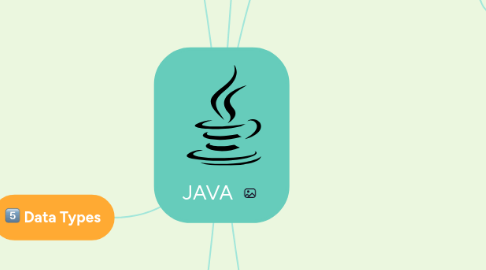JAVA
by احمد حامد


1. Features
1.1. general purpose programming language
1.2. simple
1.3. Multithreaded
1.4. Portable
1.5. Secure
1.6. Portable
1.7. Architecture-neutral
1.8. Distributed
1.9. Interpreted
1.10. Dynamic
2. Application
2.1. Java Mobile Applications
2.2. Java Desktop GUI Applications
2.3. Java Web-based Applications
2.4. Java Web Servers and Application Servers
2.5. Java Enterprise Applications
2.6. Java Gaming Applications
2.7. Java Big Data Technologies
3. oop's
3.1. Object
3.2. Class
3.3. Inheritance
3.4. Polymorphism
3.5. Abstraction
3.6. Coupling
3.7. Encapsulation
3.8. Cohesion
3.9. Association
3.10. Aggregation
3.11. Composition
4. Data Types
4.1. Primitive Data Types
4.1.1. boolean
4.1.2. byte
4.1.3. char
4.1.4. short
4.1.5. int
4.1.6. long
4.1.7. float
4.1.8. double
4.2. Non-Primitive Data Type
4.2.1. string
4.2.2. array
5. Java Tools
5.1. NetBeans
5.2. JUnit
5.3. Patch Manager
5.4. Java Performance Monitoring
5.5. ManageEngine Applications Manager
5.6. Apache Maven
5.7. Mockito
6. Basic Elements In Java
6.1. Basic Operators
6.1.1. Arithmetic Operators
6.1.1.1. +,-,*,/,%
6.1.2. Relational Operators
6.1.2.1. ==,!=,<,>
6.1.3. Logical Operators
6.1.3.1. &&,||,!
6.1.4. Assignment Operators
6.1.4.1. =,+=,-=,*=
6.2. keywords
6.2.1. catch
6.2.2. final
6.2.3. native
6.2.4. import
6.2.5. extends
6.2.6. continue
6.2.7. default
6.3. Control Statements
6.3.1. If-else Statement
6.3.2. Switch Statement
6.3.3. Loops in Java
6.3.3.1. for
6.3.3.2. while
6.3.3.3. do-while
6.3.4. Continue Statement
6.3.5. Break Statement
6.4. Comments
6.4.1. Single Line
6.4.2. Multi Line
6.5. Methods
6.5.1. Predefined Method
6.5.2. Predefined Method
